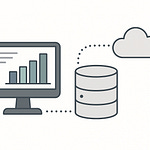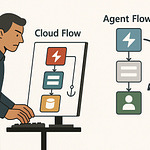Opening: The Bottleneck Nobody Talks About
AI training speeds have just exploded. We’re now running models so large they make last year’s supercomputers look like pocket calculators. But here’s the awkward truth: your data fabric—the connective tissue between storage, compute, and analytics—is crawling along like it’s stuck in 2013. The result? GPUs idling, inference jobs stalling, and CFOs quietly wondering why “the AI revolution” needs another budget cycle.
Everyone loves the idea of being “AI‑ready.” You’ve heard the buzzwords—governance, compliance, scalable storage—but in practice, most organizations have built AI pipelines on infrastructure that simply can’t move data fast enough. It’s like fitting a jet engine on a bicycle: technically impressive, practically useless.
Enter NVIDIA Blackwell on Azure—a platform designed not to make your models smarter but to stop your data infrastructure from strangling them. Blackwell is not incremental; it’s a physics upgrade. It turns the trickle of legacy interconnects into a flood. Compared to that, traditional data handling looks downright medieval.
By the end of this explanation, you’ll see exactly how Blackwell on Azure eliminates the chokepoints throttling your modern AI pipelines—and why, if your data fabric remains unchanged, it doesn’t matter how powerful your GPUs are.
To grasp why Blackwell changes everything, you first need to know what’s actually been holding you back.
Section 1: The Real Problem—Your Data Fabric Can’t Keep Up
Let’s start with the term itself. “Data fabric” sounds fancy, but it’s basically your enterprise nervous system. It connects every app, data warehouse, analytics engine, and security policy into one operational organism. Ideally, information should flow through it as effortlessly as neurons firing between your brain’s hemispheres. In reality? It’s more like a circulation system powered by clogged pipes, duct-taped APIs, and governance rules added as afterthoughts.
Traditional cloud fabrics evolved for transactional workloads—queries, dashboards, compliance checks. They were never built for the firehose tempo of generative AI. Every large model demands petabytes of training data that must be accessed, transformed, cached, and synchronized in microseconds. Yet, most companies are still shuffling that data across internal networks with more latency than a transatlantic Zoom call.
And here’s where the fun begins: each extra microsecond compounds. Suppose you have a thousand GPUs, all waiting for their next batch of training tokens. If your interconnect adds even a microsecond per transaction, that single delay replicates across every GPU, every epoch, every gradient update. Suddenly, a training run scheduled for hours takes days, and your cloud bill grows accordingly. Latency is not an annoyance—it’s an expense.
The common excuse? “We have Azure, we have Fabric, we’re modern.” No—your software stack might be modern, but the underlying transport is often prehistoric. Cloud‑native abstractions can’t outrun bad plumbing. Even the most optimized AI architectures crash into the same brick wall: bandwidth limitations between storage, CPU, and GPU memory spaces. That’s the silent tax on your innovation.
Picture a data scientist running a multimodal training job—language, vision, maybe some reinforcement learning—all provisioned through a “state‑of‑the‑art” setup. The dashboards look slick, the GPUs display 100% utilization for the first few minutes, then… starvation. Bandwidth inefficiency forces the GPUs to idle as data trickles in through overloaded network channels. The user checks the metrics, blames the model, maybe even re‑tunes hyperparameters. The truth? The bottleneck isn’t the math; it’s the movement.
This is the moment most enterprises realize they’ve been solving the wrong problem. You can refine your models, optimize your kernel calls, parallelize your epochs—but if your interconnect can’t keep up, you’re effectively feeding a jet engine with a soda straw. You’ll never achieve theoretical efficiency because you’re constrained by infrastructure physics, not algorithmic genius.
And because Azure sits at the center of many of these hybrid ecosystems—Power BI, Synapse, Fabric, Copilot integrations—the pain propagates. When your data fabric is slow, analytics drag, dashboards lag, and AI outputs lose relevance before they even reach users. It’s a cascading latency nightmare disguised as normal operations.
That’s the disease. And before Blackwell, there wasn’t a real cure—only workarounds: caching layers, prefetching tricks, and endless talks about “data democratization.” Those patched over the symptom. Blackwell re‑engineers the bloodstream.
Now that you understand the problem—why the fabric itself throttles intelligence—we can move to the solution: a hardware architecture built precisely to tear down those bottlenecks through sheer bandwidth and topology redesign.
That, fortunately for you, is where NVIDIA’s Grace Blackwell Superchip enters the story.
Section 2: Anatomy of Blackwell—A Cold, Ruthless Physics Upgrade
The Grace Blackwell Superchip, or GB200, isn’t a simple generational refresh—it’s a forced evolution. Two chips in one body: Grace, an ARM‑based CPU, and Blackwell, the GPU, share a unified memory brain so they can stop emailing each other across a bandwidth‑limited void. Before this, CPUs and GPUs behaved like divorced parents—occasionally exchanging data, complaining about the latency. Now they’re fused, communicating through 960 GB/s of coherent NVLink‑C2C bandwidth. Translation: no more redundant copies between CPU and GPU memory, no wasted power hauling the same tensors back and forth.
Think of the entire module as a neural cortico‑thalamic loop: computation and coordination happening in one continuous conversation. Grace handles logic and orchestration; Blackwell executes acceleration. That cohabitation means training jobs don’t need to stage data through multiple caches—they simply exist in a common memory space. The outcome is fewer context switches, lower latency, and relentless throughput.
Then we scale outward—from chip to rack. When 72 of these GPUs occupy a GB200 NVL72 rack, they’re bound by a fifth‑generation NVLink Switch Fabric that pushes a total of 130 terabytes per second of all‑to‑all bandwidth. Yes, terabytes per second. Traditional PCIe starts weeping at those numbers. In practice, this fabric turns an entire rack into a single, giant GPU with one shared pool of high‑bandwidth memory—the digital equivalent of merging 72 brains into a hive mind. Each GPU knows what every other GPU holds in memory, so cross‑node communication no longer feels like an international shipment; it’s an intra‑synapse ping.
If you want an analogy, consider the NVLink Fabric as the DNA backbone of a species engineered for throughput. Every rack is a chromosome—data isn’t transported between cells, it’s replicated within a consistent genetic code. That’s why NVIDIA calls it fabric: not because it sounds trendy, but because it actually weaves computation into a single physical organism where memory, bandwidth, and logic coexist.
But within a data center, racks don’t live alone; they form clusters. Enter Quantum‑X800 InfiniBand, NVIDIA’s new inter‑rack communication layer. Each GPU gets a line capable of 800 gigabits per second, meaning an entire cluster of thousands of GPUs acts as one distributed organism. Packets travel with adaptive routing and congestion‑aware telemetry—essentially nerves that sense traffic and reroute signals before collisions occur. At full tilt, Azure can link tens of thousands of these GPUs into a coherent supercomputer scaled beyond any single facility. The neurons may span continents, but the synaptic delay remains microscopic.
And there’s the overlooked part—thermal reality. Running trillions of parameters at petaflop speeds produces catastrophic heat if unmanaged. The GB200 racks use liquid cooling not as a luxury but as a design constraint. Microsoft’s implementation in Azure ND GB200 v6 VMs uses direct‑to‑chip cold plates and closed‑loop systems with zero water waste. It’s less a server farm and more a precision thermodynamic engine: constant recycling, minimal evaporation, maximum dissipation. Refusing liquid cooling here would be like trying to cool a rocket engine with a desk fan.
Now, compare this to the outgoing Hopper generation. Relative measurements speak clearly: thirty‑five times more inference throughput, two times the compute per watt, and roughly twenty‑five times lower large‑language‑model inference cost. That’s not marketing fanfare; that’s pure efficiency physics. You’re getting democratized gigascale AI not by clever algorithms, but by re‑architecting matter so electrons travel shorter distances.
For the first time, Microsoft has commercialized this full configuration through the Azure ND GB200 v6 virtual machine series. Each VM node exposes the entire NVLink domain and hooks into Azure’s high‑performance storage fabric, delivering Blackwell’s speed directly to enterprises without requiring them to mortgage a data center. It’s the opposite of infrastructure sprawl—rack‑scale intelligence available as a cloud‑scale abstraction.
Essentially, what NVIDIA achieved with Blackwell and what Microsoft operationalized on Azure is a reconciliation between compute and physics. Every previous generation fought bandwidth like friction; this generation eliminated it. GPUs no longer wait. Data no longer hops. Latency is dealt with at the silicon level, not with scripting workarounds.
But before you hail hardware as salvation, remember: silicon can move at light speed, yet your cloud still runs at bureaucratic speed if the software layer can’t orchestrate it. Bandwidth doesn’t schedule itself; optimization is not automatic. That’s why the partnership matters. Microsoft’s job isn’t to supply racks—it’s to integrate this orchestration into Azure so that your models, APIs, and analytics pipelines actually exploit the potential.
Hardware alone doesn’t win the war; it merely removes the excuses. What truly weaponizes Blackwell’s physics is Azure’s ability to scale it coherently, manage costs, and align it with your AI workloads. And that’s exactly where we go next.
Section 3: Azure’s Integration—Turning Hardware into Scalable Intelligence
Hardware is the muscle. Azure is the nervous system that tells it what to flex, when to rest, and how to avoid setting itself on fire. NVIDIA may have built the most formidable GPU circuits on the planet, but without Microsoft’s orchestration layer, Blackwell would still be just an expensive heater humming in a data hall. The real miracle isn’t that Blackwell exists; it’s that Azure turns it into something you can actually rent, scale, and control.
At the center of this is the Azure ND GB200 v6 series—Microsoft’s purpose-built infrastructure to expose every piece of Blackwell’s bandwidth and memory coherence without making developers fight topology maps. Each ND GB200 v6 instance connects dual Grace Blackwell Superchips through Azure’s high-performance network backbone, joining them into enormous NVLink domains that can be expanded horizontally to thousands of GPUs. The crucial word there is domain: not a cluster of devices exchanging data, but a logically unified organism whose memory view spans racks.
This is how Azure transforms hardware into intelligence. The NVLink Switch Fabric inside each NVL72 rack gives you that 130 TB/s internal bandwidth, but Azure stitches those racks together across the Quantum‑X800 InfiniBand plane, allowing the same direct‑memory coherence across datacenter boundaries. In effect, Azure can simulate a single Blackwell superchip scaled out to data‑center scale. The developer doesn’t need to manage packet routing or memory duplication; Azure abstracts it as one contiguous compute surface. When your model scales from billions to trillions of parameters, you don’t re‑architect—you just request more nodes.
And this is where the Azure software stack quietly flexes. Microsoft re‑engineered its HPC scheduler and virtualization layer so that every ND GB200 v6 instance participates in domain‑aware scheduling. That means instead of throwing workloads at random nodes, Azure intelligently maps them based on NVLink and InfiniBand proximity, reducing cross‑fabric latency to near‑local speeds. It’s not glamorous, but it’s what prevents your trillion‑parameter model from behaving like a badly partitioned Excel sheet.
Now add NVIDIA NIM microservices—the containerized inference modules optimized for Blackwell. These come pre‑integrated into Azure AI Foundry, Microsoft’s ecosystem for building and deploying generative models. NIM abstracts CUDA complexity behind REST or gRPC interfaces, letting enterprises deploy tuned inference endpoints without writing a single GPU kernel call. Essentially, it’s a plug‑and‑play driver for computational insanity. Want to fine‑tune a diffusion model or run multimodal RAG at enterprise scale? You can, because Azure hides the rack‑level plumbing behind a familiar deployment model.
Of course, performance means nothing if it bankrupts you. That’s why Azure couples these superchips to its token‑based pricing model—pay per token processed, not per idle GPU‑second wasted. Combined with reserved instance and spot pricing, organizations finally control how efficiently their models eat cash. A sixty‑percent reduction in training cost isn’t magic—it’s just dynamic provisioning that matches compute precisely to workload demand. You can right‑size clusters, schedule overnight runs at lower rates, and even let the orchestrator scale down automatically the second your epoch ends.
This optimization extends beyond billing. The ND GB200 v6 series runs on liquid‑cooled, zero‑water‑waste infrastructure, which means sustainability is no longer the convenient footnote at the end of a marketing deck. Every watt of thermal energy recycled is another watt available for computation. Microsoft’s environmental engineers designed these systems as closed thermodynamic loops—GPU heat becomes data‑center airflow energy reuse. So performance guilt dies quietly alongside evaporative cooling.
From a macro view, Azure has effectively transformed the Blackwell ecosystem into a managed AI supercomputer service. You get the 35× inference throughput and 28 % faster training demonstrated against H100 nodes, but delivered as a virtualized, API‑accessible pool of intelligence. Enterprises can link Fabric analytics, Synapse queries, or Copilot extensions directly to these GPU clusters without rewriting architectures. Your cloud service calls an endpoint; behind it, tens of thousands of Blackwell GPUs coordinate like synchronized neurons.
Still, the real brilliance lies in how Azure manages coherence between the hardware and the software. Every data packet travels through telemetry channels that constantly monitor congestion, thermals, and memory utilization. Microsoft’s scheduler interprets this feedback in real time, balancing loads to maintain consistent performance. In practice, that means your training jobs stay linear instead of collapsing under bandwidth contention. It’s the invisible optimization most users never notice—because nothing goes wrong.
This also marks a fundamental architectural shift. Before, acceleration meant offloading parts of your compute; now, Azure integrates acceleration as a baseline assumption. The platform isn’t a cluster of GPUs—it’s an ecosystem where compute, storage, and orchestration have been physically and logically fused. That’s why latencies once measured in milliseconds now disappear into microseconds, why data hops vanish, and why models once reserved for hyperscalers are within reach of mid‑tier enterprises.
To summarize this layer—without breaking the sarcasm barrier—Azure’s Blackwell integration does what every CIO has been promising for ten years: real scalability that doesn’t punish you for success. Whether you’re training a trillion‑parameter generative model or running real‑time analytics in Microsoft Fabric, the hardware no longer dictates your ambitions; the configuration does.
And yet, there’s one uncomfortable truth hiding beneath all this elegance: speed at this level shifts the bottleneck again. Once the hardware and orchestration align, the limitation moves back to your data layer—the pipelines, governance, and ingestion frameworks feeding those GPUs. All that performance is meaningless if your data can’t keep up.
So let’s address that uncomfortable truth next: feeding the monster without starving it.
Section 4: The Data Layer—Feeding the Monster Without Starving It
Now we’ve arrived at the inevitable consequence of speed: starvation. When computation accelerates by orders of magnitude, the bottleneck simply migrates to the next weakest link—the data layer. Blackwell can inhale petabytes of training data like oxygen, but if your ingestion pipelines are still dribbling CSV files through a legacy connector, you’ve essentially built a supercomputer to wait politely.
The data fabric’s job, in theory, is to ensure sustained flow. In practice, it behaves like a poorly coordinated supply chain—latency at one hub starves half the factory. Every file transfer, every schema translation, every governance check injects delay. Multiply that across millions of micro‑operations, and those blazing‑fast GPUs become overqualified spectators. There’s a tragic irony in that: state‑of‑the‑art hardware throttled by yesterday’s middleware.
The truth is that once compute surpasses human-scale delay, milliseconds matter. Real‑time feedback loops—reinforcement learning, streaming analytics, decision agents—require sub‑millisecond data coherence. A GPU waiting an extra millisecond per batch across a thousand nodes bleeds efficiency measurable in thousands of dollars per hour. Azure’s engineers know this, which is why the conversation now pivots from pure compute horsepower to end‑to‑end data throughput.
Enter Microsoft Fabric, the logical partner in this marriage of speed. Fabric isn’t a hardware product; it’s the unification of data engineering, warehousing, governance, and real‑time analytics. It brings pipelines, Power BI reports, and event streams into one governance context. But until now, Fabric’s Achilles’ heel was physical—its workloads still traveled through general‑purpose compute layers. Blackwell on Azure effectively grafts a high‑speed circulatory system onto that digital body. Data can leave Fabric’s eventstream layer, hit Blackwell clusters for analysis or model inference, and return as insights—all within the same low‑latency ecosystem.
Think of it this way: the old loop looked like train freight—batch dispatches chugging across networks to compute nodes. The new loop resembles a capillary system, continuously pumping data directly into GPU memory. Governance remains the red blood cells, ensuring compliance and lineage without clogging arteries. When the two are balanced, Fabric and Blackwell form a metabolic symbiosis—information consumed and transformed as fast as it’s created.
Here’s where things get interesting. Ingestion becomes the limiting reagent. Many enterprises will now discover that their connectors, ETL scripts, or data warehouses introduce seconds of drag in a system tuned for microseconds. If ingestion is slow, GPUs idle. If governance is lax, corrupted data propagates instantly. That speed doesn’t forgive sloppiness; it amplifies it.
Consider a real‑time analytics scenario: millions of IoT sensors streaming temperature and pressure data into Fabric’s Real‑Time Intelligence hub. Pre‑Blackwell, edge aggregation handled pre‑processing to limit traffic. Now, with NVLink‑fused GPU clusters behind Fabric, you can analyze every signal in situ. The same cluster that trains your model can run inference continuously, adjusting operations as data arrives. That’s linear scaling—as data doubles, compute keeps up perfectly because the interconnect isn’t the bottleneck anymore.
Or take large language model fine‑tuning. With Fabric feeding structured and unstructured corpora directly to ND GB200 v6 instances, throughput no longer collapses during tokenization or vector indexing. Training updates stream continuously, caching inside unified memory rather than bouncing between disjoint storage tiers. The result: faster convergence, predictable runtime, and drastically lower cloud hours. Blackwell doesn’t make AI training cheaper per se—it makes it shorter, and that’s where savings materialize.
The enterprise implication is blunt. Small‑to‑mid organizations that once needed hyperscaler budgets can now train or deploy models at near‑linear cost scaling. Efficiency per token becomes the currency of competitiveness. For the first time, Fabric’s governance and semantic modeling meet hardware robust enough to execute at theoretical speed. If your architecture is optimized, latency ceases to exist as a concept; it’s just throughput waiting for data to arrive.
Of course, none of this is hypothetical. Azure and NVIDIA have already demonstrated these gains in live environments—real clusters, real workloads, real cost reductions. The message is simple: when you remove the brakes, acceleration doesn’t just happen at the silicon level; it reverberates through your entire data estate.
And with that, our monster is fed—efficiently, sustainably, unapologetically fast. What happens when enterprises actually start operating at this cadence? That’s the final piece: translating raw performance into tangible, measurable payoff.
Section 5: Real-World Payoff—From Trillion-Parameter Scale to Practical Cost Savings
Let’s talk numbers—because at this point, raw performance deserves quantification. Azure’s ND GB200 v6 instances running the NVIDIA Blackwell stack deliver, on record, thirty-five times more inference throughput than the prior H100 generation, with twenty‑eight percent faster training in industry benchmarks such as MLPerf. The GEMM workload tests show a clean doubling of matrix‑math performance per rack. Those aren’t rounding errors; that’s an entire category shift in computational density.
Translated into business English: what previously required an exascale cluster can now be achieved with a moderately filled data hall. A training job that once cost several million dollars and consumed months of runtime drops into a range measurable by quarter budgets, not fiscal years. At scale, those cost deltas are existential.
Consider a multinational training a trillion‑parameter language model. On Hopper‑class nodes, you budget long weekends—maybe a holiday shutdown—to finish a run. On Blackwell within Azure, you shave off entire weeks. That time delta isn’t cosmetic; it compresses your product‑to‑market timeline. If your competitor’s model iteration takes one quarter less to deploy, you’re late forever.
And because inference runs dominate operational costs once models hit production, that thirty‑five‑fold throughput bonus cascades directly into the ledger. Each token processed represents compute cycles and electricity—both of which are now consumed at a fraction of their previous rate. Microsoft’s renewable‑powered data centers amplify the effect: two times the compute per watt means your sustainability report starts reading like a brag sheet instead of an apology.
Efficiency also democratizes innovation. Tasks once affordable only to hyperscalers—foundation model training, simulation of multimodal systems, reinforcement learning with trillions of samples—enter attainable territory for research institutions or mid‑size enterprises. Blackwell on Azure doesn’t make AI “cheap”; it makes iteration continuous. You can retrain daily rather than quarterly, validate hypotheses in hours, and adapt faster than your compliance paperwork can update.
Picture a pharmaceutical company running generative drug simulations. Pre‑Blackwell, a full molecular‑binding training cycle might demand hundreds of GPU nodes and weeks of runtime. With NVLink‑fused racks, the same workload compresses to days. Analysts move from post‑mortem analysis to real‑time hypothesis testing. The same infrastructure can pivot instantly to a different compound without re‑architecting, because the bandwidth headroom is functionally limitless.
Or a retail chain training AI agents for dynamic pricing. Latency reductions in the Azure–Blackwell pipeline allow those agents to ingest transactional data, retrain strategies, and issue pricing updates continually. The payoff? Reduced dead stock, higher margin responsiveness, and an AI loop that regenerates every market cycle in real time.
From a cost‑control perspective, Azure’s token‑based pricing model ensures those efficiency gains don’t evaporate in billing chaos. Usage aligns precisely with data processed. Reserved instances and smart scheduling keep clusters busy only when needed. Enterprises report thirty‑five to forty percent overall infrastructure savings just from right‑sizing and off‑peak scheduling—but the real win is predictability. You know, in dollars per token, what acceleration costs. That certainty allows CFOs to treat model training as a budgeted manufacturing process rather than a volatile R&D gamble.
Sustainability sneaks in as a side bonus. The hybrid of Blackwell’s energy‑efficient silicon and Microsoft’s zero‑water‑waste cooling yields performance per watt metrics that would’ve sounded fictional five years ago. Every joule counts twice: once in computation, once in reputation.
Ultimately, these results prove a larger truth: the cost of intelligence is collapsing. Architectural breakthroughs translate directly into creative throughput. Data scientists no longer spend their nights rationing GPU hours; they spend them exploring. Blackwell compresses the economics of discovery, and Azure institutionalizes it.
So yes, trillion‑parameter scale sounds glamorous, but the real-world payoff is pragmatic—shorter cycles, smaller bills, faster insights, and scalable access. You don’t need to be OpenAI to benefit; you just need a workload and the willingness to deploy on infrastructure built for physics, not nostalgia.
You now understand where the money goes, where the time returns, and why the Blackwell generation redefines not only what models can do but who can afford to build them. And that brings us to the final reckoning: if the architecture has evolved this far, what happens to those who don’t?
Conclusion: The Inevitable Evolution
The world’s fastest architecture isn’t waiting for your modernization plan. Azure and NVIDIA have already fused computation, bandwidth, and sustainability into a single disciplined organism—and it’s moving forward whether your pipelines keep up or not.
The key takeaway is brutally simple: Azure + Blackwell means latency is no longer a valid excuse. Data fabrics built like medieval plumbing will choke under modern physics. If your stack can’t sustain the throughput, neither optimization nor strategy jargon will save it. At this point, your architecture isn’t the bottleneck—you are.
So the challenge stands: refactor your pipelines, align Fabric and governance with this new hardware reality, and stop mistaking abstraction for performance. Because every microsecond you waste on outdated interconnects is capacity someone else is already exploiting.
If this explanation cut through the hype and clarified what actually matters in the Blackwell era, subscribe for more Azure deep dives engineered for experts, not marketing slides. Next episode: how AI Foundry and Fabric orchestration close the loop between data liquidity and model velocity.
Choose structure over stagnation. Lock in your upgrade path—subscribe, enable alerts, let the updates deploy automatically, and keep pace with systems that no longer know how to slow down.










